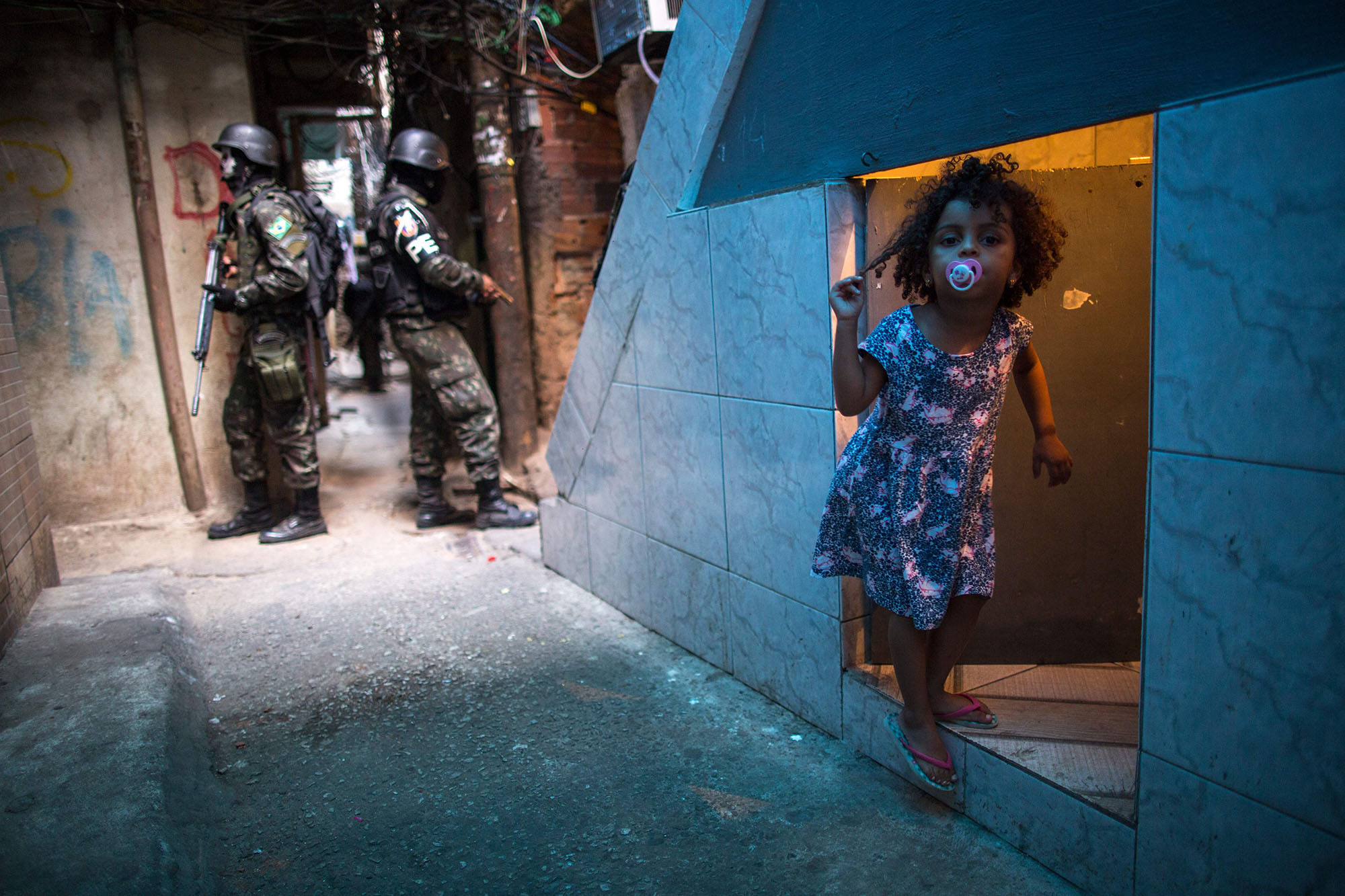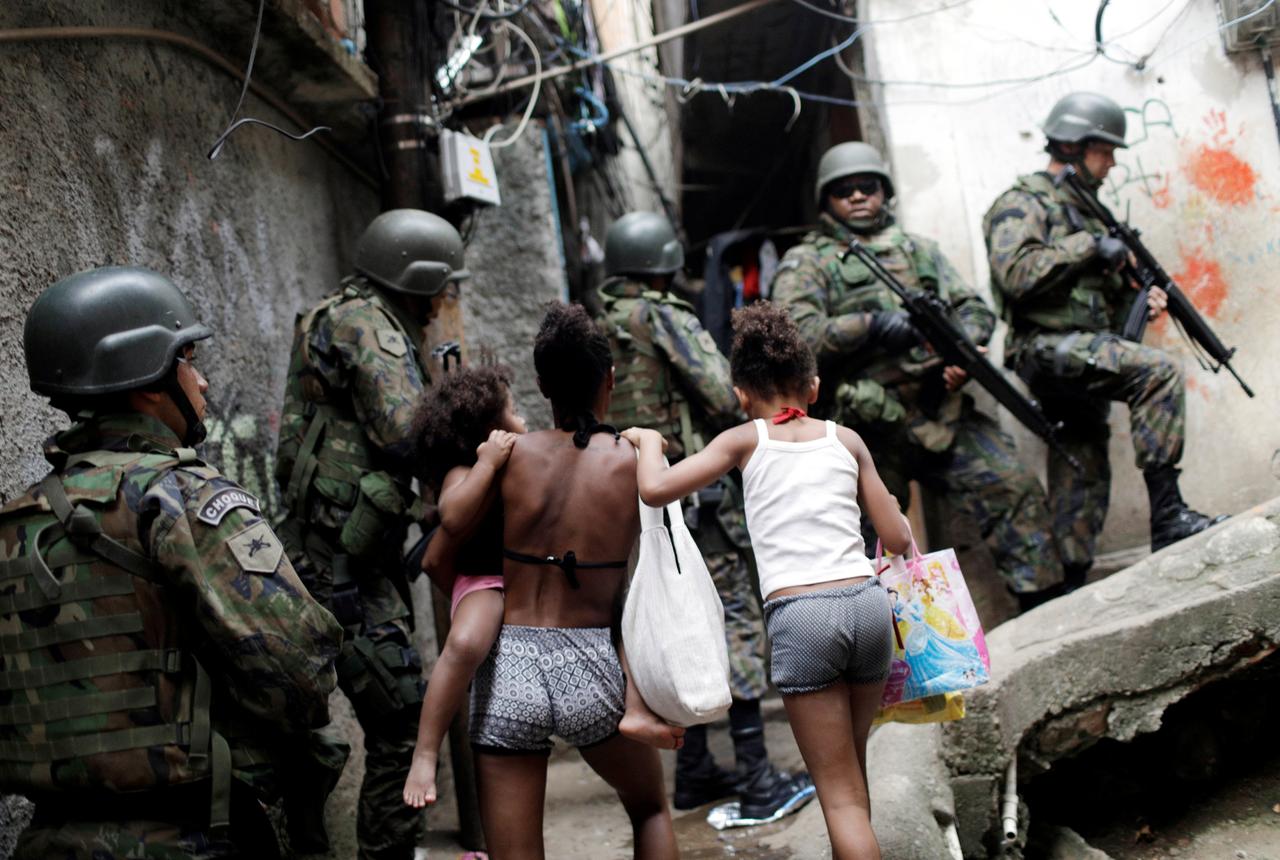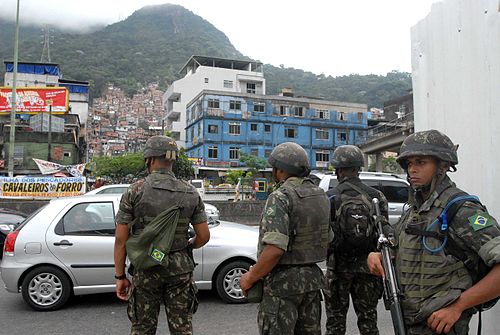In the late 19th century, the state gave regulatory impetus for the creation of Rio de Janeiro's first squatter settlement. The soldiers from the War of Canudos (1896-7) were granted permission by Ministry of War to settle on the Providência hill, located between the seaside and centre of the city (Pino 1997). The arrival of former black slaves expanded this settlement and the hill became known as Morro de Providência (Pino 1997). The first wave of formal government intervention was in direct response to the overcrowding and outbreak of disease in Providência and the surrounding slums that had begun to appear through internal migration (Oliveira 1996). The simultaneous immigration of White Europeans to the city in this period generated strong demand for housing near the water and the government responded by "razing" the slums and relocating the slum dwellers to Rio's north and south zones (Oliveira 1996, pp. 74). This was the beginning of almost a century of aggressive eradication policies that characterised state-sanctioned interventions.
Favelas in the early twentieth century were considered breeding grounds for anti-social behavior and spreading of disease. The issue of honor pertaining to legal issues was not even considered for residents of the favelas. However after a series of comments and events in the neighborhood of Morro da Cyprianna, during which a local woman Elvira Rodrigues Marques was slandered, the Marques family took it to court. This is a significant change in what the public considered the norm for favela residents, who the upper classes considered devoid of honor all together.
Following the initial forced relocation, favelas were left largely untouched by the government until the 1940s. During this period politicians, under the auspice of national industrialisation and poverty alleviation, pushed for high density public housing as an alternative to the favelas (Skidmore 2010). The "Parque Proletário" program relocated favelados to nearby temporary housing while land was cleared for the construction of permanent housing units (Skidmore 2010). In spite of the political assertions of Rio's Mayor Henrique Dodsworth, the new public housing estates were never built and the once-temporary housing alternatives began to grow into new and larger favelas (Oliveira 1996). Skidmore (2010) argues that "Parque Proletário" was the basis for the intensified eradication policy of the 1960s and 1970s.
The mass urban migration to Rio de Janeiro in the 1950s resulted in the proliferation of favelas across the urban terrain. In order to deal with the "favela problem" (Portes 1979, pp. 5), the state implemented a full-scale favela removal program in the 1960s and 1970s that resettled favelados to the periphery of the city (Oliveira 1996). According to Anthony (2013), some of the most brutal favela removals in Rio de Janeiro's history occurred during this period. The military regime of the time provided limited resources to support the transition and favelados struggled to adapt to their new environments that were effectively ostracised communities of poorly built housing, inadequate infrastructure and lacking in public transport connections (Portes 1979). Perlman (2006) points to the state's failure in appropriately managing the favelas as the main reason for the rampant violence, drugs and gang problems that ensued in the communities in the following years. The creation of BOPE (Special Police Operations Battalion) in 1978 was the government's response to this violence (Pino 1997). BOPE, in their all black military ensemble and weaponry, was Rio's attempt to confront violence with an equally opposing entity.
In the 1980s and early 1990s, public policy shifted from eradication to preservation and upgrading of the favelas. The "Favela-Bairro" program, launched in 1993, sought to improve living standards for the favelados (Pamuk and Cavallieri 1998). The program provided basic sanitation services and social services, connected favelas to the formal urban community through a series of street connections and public spaces and legalised land tenure (Pamuk and Cavallieri 1998). Aggressive intervention however did not entirely disappear from the public agenda. Stray-bullet killings, drug gangs and general violence were escalating in the favelas and from 1995 to mid-1995, the state approved a joint army-police intervention called "Operação Rio" (Human Rights Watch 1996). "Operação Rio" was the state's attempt to regain control of the favelas from the drug factions that were consolidating the social and political vacuum left by previously unsuccessful state policies and interventions (Perlman 2006).
All rights reserved to Wikipedia for content and Google Images for images.



